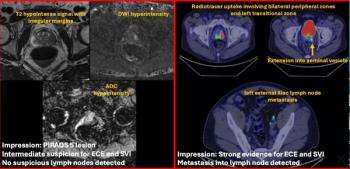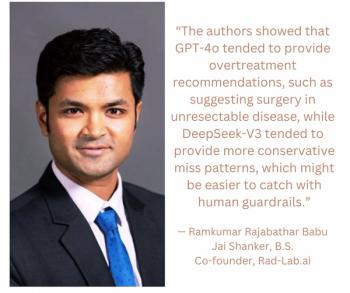In prognostic models for assessing breast cancer risk, the inclusion of principal components (PCs) of radiomic parenchymal phenotypes, derived from full-field digital mammography (FFDM), was associated with significantly higher AUCs for predicting false-negative cases as well as symptomatic interval cancers.
For the retrospective cross-sectional study, recently published in Radiology, researchers identified six parenchymal phenotypes from radiomic breast texture features that were derived from FFDM data for 30,000 women (mean age of 57.4).
For the second stage of the research, the study authors assessed the prognostic impact of principal components of the parenchymal phenotypes in a 1,055-patient cohort of women with invasive breast cancer and a cohort of 2,764 women without breast cancer.
After adjusting for factors such as age, body mass index (BMI) and BI-RADS breast density, the researchers found that inclusion of PCs from the parenchymal phenotypes was associated with a nine percent increase in the AUC for predicting symptomatic interval cancers (77 percent vs. 68 percent) and a 7 percent increase in predicting false negative findings (73 percent vs. 66 percent).
“Our results suggest parenchymal phenotypes extracted from FFDM from diverse women and screening practices are reproducible and provide information for breast cancer risk and false-negative (FN) findings, beyond breast density,” wrote lead study author Stacey J. Winham, Ph.D., who is affiliated with the Department of Quantitative Health Sciences at the Mayo Clinic in Rochester, Mn., and colleagues.
Three Key Takeaways
1. Enhanced risk prediction. Incorporating principal components (PCs) of radiomic parenchymal phenotypes from full-field digital mammography (FFDM) significantly improves the ability to predict both symptomatic interval cancers and false-negative (FN) findings beyond traditional metrics including breast density.
2. Potential for personalized screening. The PCs derived from radiomic features may help identify women at higher risk for missed or rapidly progressing breast cancers, potentially guiding the need for supplemental screening strategies.
3. Reproducibility and generalizability. The parenchymal phenotypes were reproducible across diverse populations and screening practices, though further studies should aim for broader racial and ethnic inclusion to validate generalizability.
The study authors suggested that PCs may indicate cancers missed on mammograms or aggressive breast cancer that occurs between recommended screenings. However, they also pointed out similarities in PC association between interval breast cancers and false-negative cases with respect to time to diagnosis.
“Regardless of whether these features reflect a breast architecture that ‘masks’ a breast cancer, a more aggressive pathologic subtype, or both, our results suggest that the PCs may be incorporated into risk prediction of FN findings to identify women at highest risk of missed and/or fast-growing tumors, which may inform supplemental screening recommendations,” added Winham and colleagues.
(Editor’s note: For related content, see “Study Reveals Disparities in Use of Follow-Up Diagnostic Services After Abnormal Mammography Findings,” “Can an Emerging AI Software for DBT Help Reduce Disparities in Breast Cancer Screening?” and “Mammography Study Shows Key Findings with AI in DBT Screening.”)
In regard to study limitations, the authors noted that they only evaluated the parenchymal phenotypes in relationship to full-field digital mammography (FFDM). Conceding over sampling of Black women with the development of the phenotypes, the researchers emphasized that further research should be more inclusive of multiple races and ethnicities.





























